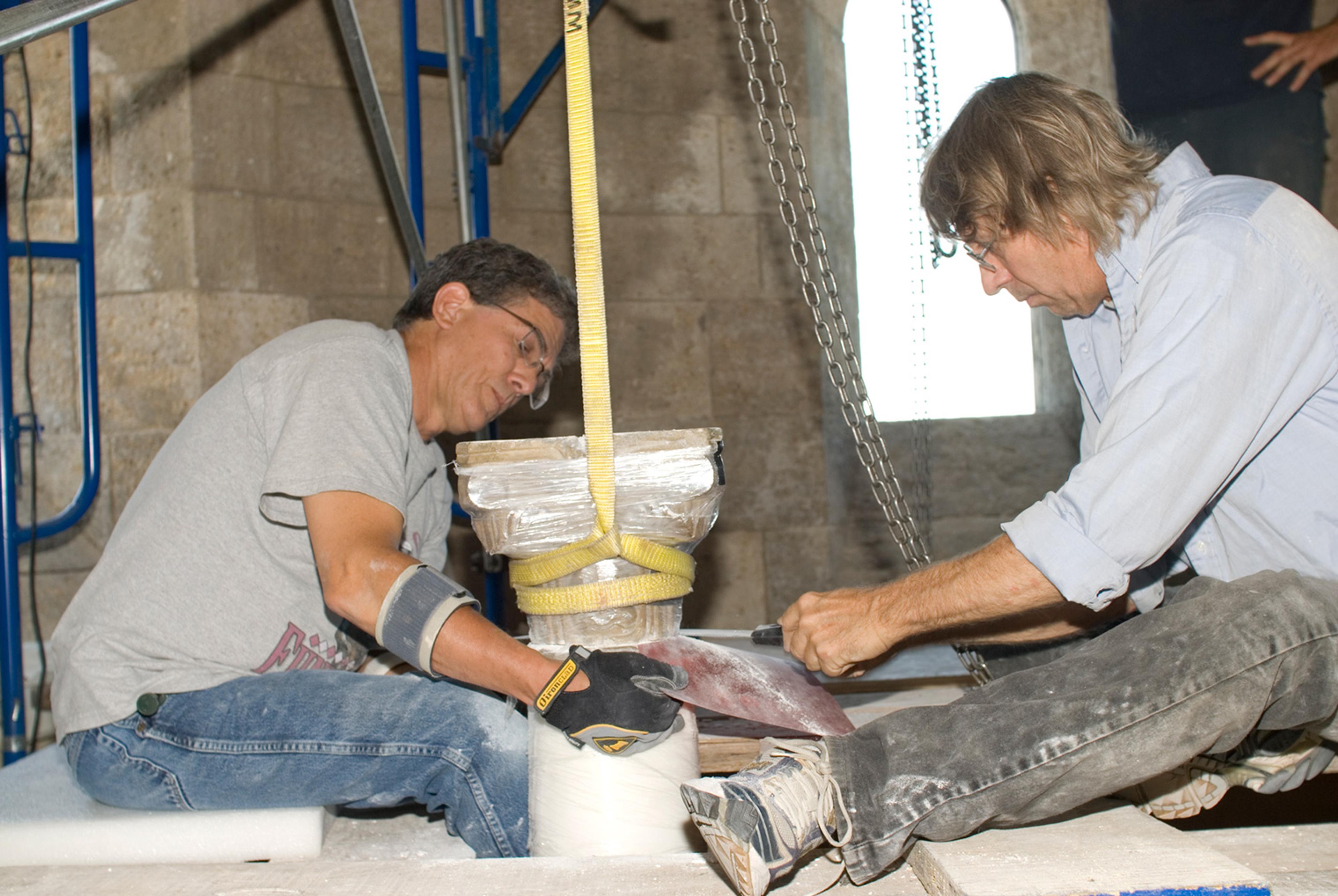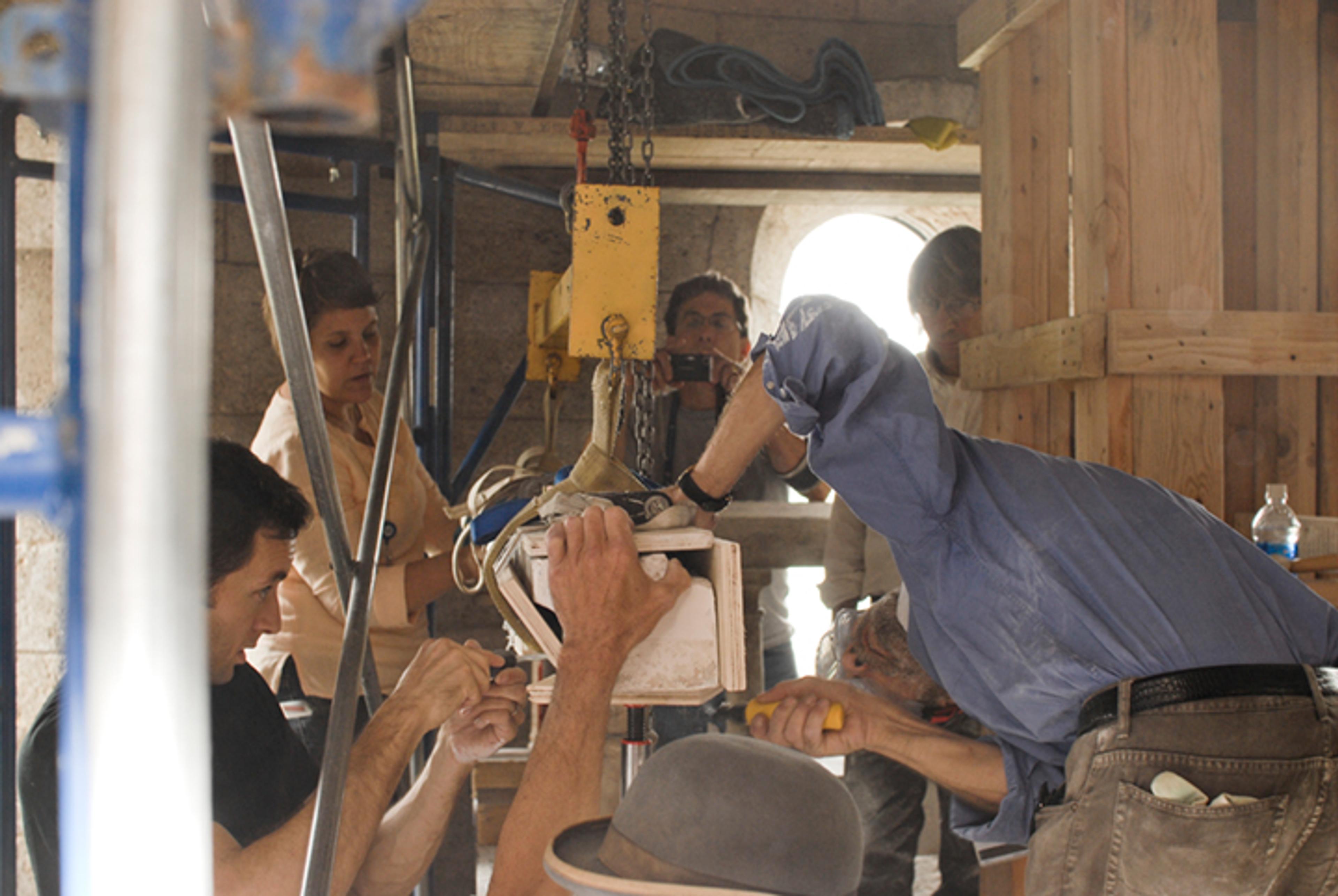
The ciborium as previously installed in the Langon Chapel at The Cloisters
During the summer of 2008, objects conservators embarked on a challenging project: moving a marble ciborium from the Langon Chapel at The Cloisters to the redesigned Medieval Europe Gallery (gallery 304) in the Main Building.
Objects conservators at The Met are responsible not only for small objects, but also for large architectural elements. Relocating a structure like the ciborium requires the skills of conservators as well as professional riggers who specialize in moving oversize art objects. Detailed and creative planning and coordination enabled the successful deinstallation, transportation, and reinstallation of the ciborium.
From a distance, the ciborium's elegant and open structure reveals no information about how the pieces are connected. All one sees is stone resting on stone, the weight of it appearing effortlessly suspended; however, multiple iron pins and staples, hidden by mortar joins, had been added to provide structural integrity. Before dismantling the ciborium, we needed to devise a means of documenting its condition and method of assembly as well as its new installation. We established a system that incorporated drawings and photographs to document and track all of its parts.
The ciborium is made up of many individual stone elements; it has been dismantled and moved several times in its history. Close examination provided clues as to which parts were original and which were new. Having determined that the mortar joins were not original, we decided that this material could be removed. The structure was disassembled from the top down. Prior to disassembly, original stone elements were wrapped to protect them from damage. Saws, blades, and drill bits thin enough to cut through even the narrowest mortar join were chosen to avoid damaging the edges of the stone.

Rudy Colban and Fred Sager using thin saws to cut through the mortar joins. The original stone elements were covered with various types of protective wrappings.
After the stone pieces were freed from the mortar, they could be lifted with the aid of the rigging equipment. Sections were lowered from the top of the structure using pulleys, complex scaffolding, and support systems.

Conservators working to free a lintel from the structure. The stone is protected from rigging straps and chains with wooden planks.

Riggers lowering a lintel down from the scaffolding. The original stone lintel is inside a protective covering of wooden planks.
Once all the pieces of the ciborium were taken down, they were carefully packed and moved approximately seven miles south to the Main Building. A scaffold was constructed in the gallery and then—starting from the bottom and working upward—each stone element was lifted into place. The columns were plumbed and the lintels were leveled, ensuring that each adjoining section of the structure would have a secure foundation.

Lawrence Becker, Michael Morris, and Carolyn Riccardelli check the level of a row of small columns atop a lintel. Each stage of the ciborium had to be perfectly level to ensure the stability of the structure.
The exact leveling of all pieces was critical to the safe balancing of the large stones. Over the course of assembly, we found that simple wedges, metal pins, and plaster— similar to those used by medieval craftsmen—were the tools and materials best suited to reassemble the structure, which now sits in the Medieval Europe Gallery.

Sari Uricheck, Franz Schmidt, Michael Morris, and Carolyn Riccardelli work together to fit the ciborium's octagonal roof sections into place.
Conservators secured all the pieces, while ensuring that the ciborium would be relatively easy to dismantle. Reversibility is an important principle of modern conservation, as is proper documentation. Considering the challenges of this project we aimed to make the task easier for future conservators should the ciborium ever need to be moved again.

The reinstalled ciborium in gallery 304.
